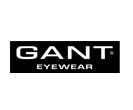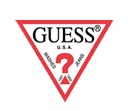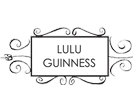Where Vision & Style
expertly come together.
Where Vision &
Style expertly
come together.
Making a decision about your eyewear goes beyond good vision and makes a statement about who you are. Your decision affects how you see and also how you want to be seen by others. But with so many different styles to choose from, getting the right look for your face and your lifestyle can be overwhelming.
Our staff will help you find the best fit for your specific needs and explain how different lenses and frames will impact your vision. They will help you narrow down your choices so you can find the look, fit and functionality you want from your eyewear. We offer a large selection of eyeglasses, contact lenses, and designer frames and sunglasses. We carry the latest European and American designer eyewear collections in a variety of styles, colors, and materials including titanium, stainless steel, and plastic.
New clients and all our current patients are welcome to visit us with their current prescription – no appointment is necessary.
Contact Lenses
We offer a wide selection of contact lenses including disposable soft contact, bifocal/multifocal, toric, and colored lenses. Whether you wear daily, weekly or monthly disposables, or conventional (vial) lenses, check out our selection of lenses that fit your needs.
A good contact lens fit starts with a thorough eye exam to ensure the most up-to-date prescription and rule out any pre-existing conditions that could interfere with contact lens wear.
We will determine the best fitting lens based on your lifestyle needs and the shape and health of your eye. In most cases, you’ll have the opportunity to try lenses on the same day as your exam. You can even go home with a few samples before making a final decision.
We follow up on the initial fitting and then make any necessary changes in fit or materials to get you the best possible fit. We teach all our patients proper contact lens care and also possible consequences if proper care is not taken. Then we continue with long-term follow-up to monitor the condition of the lenses and to ensure that proper hygiene is being maintained.
- Vistakon / Acuvue Contact Lenses
- Bausch & Lomb Lenses
- CooperVision Contact Lenses
- Ciba Lenses
If you are over 40 and have difficulty seeing close up, you probably have a common age-related condition called presbyopia which is when the eye’s natural lens loses the ability to focus on close objects. Presbyopia is a natural process as the eye ages and affects the majority of people from age 40 and upward. Individuals with presbyopia are often familiar with the need to hold reading materials such as newspapers an arm’s length away from their eyes in order to see clearly, yet reading glasses with bifocal or multifocal (progressive) lenses can help.
Fortunately for those who don’t like the look, feel, or inconvenience of reading glasses, there is another option. Bifocal and multifocal lenses are also available in contact lenses in both soft and Rigid Gas Permeable (RGP) varieties.
Multifocal contact lenses give you added freedom over glasses and they allow you to be able to view any direction – up, down, and to the sides – with similar vision. People wearing progressive lenses in glasses on the other hand have to look over their glasses if they want to view upwards or into the distance.
The Difference Between Bifocal and Multifocal Lenses
Just as the name indicates, bifocal lenses are divided into two distinct segments for different vision powers, the first for distance vision and the second for near vision. This enables you to clearly switch your focus from near to far as needed, but your vision will not necessarily be clear in between. The term multifocal lenses can refer to any lenses with multiple powers including bifocals, trifocals, or progressive lenses. Non-bifocal multifocal lenses have a range of powers that enable you to constantly adjust your focus to see clearly from up close to far and in between.
Multifocal contact lenses are generally designed in one of two ways, simultaneous vision lenses or alternating vision lenses.
Simultaneous vision lenses
The most popular version of multifocal contact lenses, simultaneous vision lenses present the distance and near vision zones of the lens at the same time. Typically after a short adjustment period, your eyes learn to utilize the segment of the lens that they need to focus on the desired object and essentially ignore the other.
They come in two designs:
- Concentric ring design: In the most basic form these are bifocal lenses that are comprised of a central circular area of one power with a ring around the alternate power, similar to a bulls-eye. In this design the power of the rings (either near or distance vision is interchangeable). For intermediate viewing (18-24 inches away) extra rings can be added to create a trifocal or multifocal lens. The width of each ring is variable depending on the power that is needed most and the edges of the rings can be blended for a smooth transition of focus, similar to progressive eyeglass lenses.
- Aspheric design: These multifocal lenses attempt to provide a natural vision experience by blending many lens powers across the surface and center of the lens. In this design both distance and near vision power are located in the central visual area and your eyes will adapt to focus on the area needed to view what you are looking at.
Translating or Alternating Vision lenses
Similar to bifocal eyeglass lenses, these contacts are divided into distinct areas or zones and your pupil will move to the desired zone depending on your vision needs. Typically the top of the lens, which is what you look through when looking straight ahead is for distance vision and the bottom area (what you look through when you look down) is for near vision. However, this can be reversed according to unique vision needs.
Since contact lenses sometimes move within your eye, translating lenses are held in place by a ballast which is an area that is thicker than the rest of the lens or by truncating or flattening the bottom to stay in line by the lower lid. These lenses are only available in rigid gas permeable lens material.
An Alternative Option to Multifocal Contact Lenses: Monovision
Monovision is another contact lens alternative for presbyopia particularly if you are having
difficulty adapting to multifocal lenses. Monovision splits your distance and near vision between your eyes, using your dominant eye for distance vision and your non-dominant eye for near vision.
Typically you will use single vision lenses in each eye however sometimes the dominant eye will use a single vision lens while a multifocal lens will be used in the other eye for intermediate and near vision. This is called modified monovision. Your eye doctor will perform a test to determine which type of lens is best suited for each eye and optimal vision.
Gas Permeable (GP) or Rigid Gas Permeable (RGP) contact lenses are an alternative to soft contact lenses that are made from a hard, oxygen permeable material. GP lenses are currently less popular than soft lenses but offer a number of advantages and are continuing to improve as research and technology advance.
GP contacts are made of a firm plastic material that allows the passage of oxygen through the lens to your cornea and the front surface of your eye – essentially allowing your eye to “breathe”. This increases comfort, health and safety during contact lens wear.
Benefits of GP or RGP Contact Lenses
Because of the strong material and the ability to diffuse oxygen, GP lenses offer a number of advantages over soft contact lenses.
Health and Hygiene Benefits:
Unlike soft lenses, GPs don’t contain water which makes them less likely to attract and breed bacteria that can cause eye infections. Further protein deposits won’t build up on the lens, keeping them cleaner and healthier.
Because they are made with strong durable material, GP lenses won’t tear and are easy to clean and disinfect. RGPs maintain their firm shape and will not dehydrate. Further GPs last longer than soft lenses – when cared for properly, a pair can last a year or more.
Comfort
GP contact lenses are custom-made for each patient based on the eye’s individual curvature, size, and corneal shape. Their ability to transmit oxygen reduces eye problems such as dry eyes caused by reduced oxygen which are common in many brands of soft lenses or hard (non-GP) lenses.
GP lenses have a smaller diameter than soft contacts, meaning that they cover less of the surface of your eye. While this may take some time to get used to initially, ultimately many find that they are just as if not more comfortable than soft contacts.
Better Vision
Due to the rigid material, GPs have a smooth surface and maintain their shape, moving along with the eye to hold their place. This provides sharp and stable vision. Further, they do not dehydrate, which is often a cause of reduced vision with other lenses.
Cost
Because they last so long, GPs are much more cost-effective than soft lenses, especially disposable lenses that require a constant supply. Because they are made to order, there is an initial cost investment and they will take up to a week to manufacture if you do need a replacement pair.
GPs for Astigmatism
GP lenses are ideal for individuals with astigmatism that may have been told that they cannot wear soft contacts. Because of the rigid nature of the lens, they hold their shape on the eye allowing for more clear and more stable vision correction.
Adapting to GP lenses
One of the downsides of GP contact lenses is that they require an adaptation period, particularly if you are used to soft lenses with a larger diameter. One of the major differences is an experience of “lens awareness” in which you feel the edge of the lens when you blink. It could take up to a few weeks to get used to the lenses but many people report that after this initial period they find that GP lenses are just as if not more comfortable than soft lens varieties.
GP Lenses for Myopia Control and Ortho-K
Research shows that gas permeable lenses might be effective in slowing the progression or worsening of myopia or nearsightedness, particularly in children. They are also used in Orthokeratology (ortho-k), a vision-correcting procedure in which you wear the lenses at night to reshape your cornea for improved vision during the day.
It is not uncommon for patients to have difficulty wearing contact lenses for a number of reasons. Due to the individual eye shape, certain conditions or impairments, or the aftermath of surgery, some patients are considered to be “hard to fit” as contact lens wearers.
For hard-to-fit patients that prefer to wear contact lenses, however, there are options available that can provide comfortable and effective contact lens wear. This will require a specialized fitting with an eye doctor that is an expert that knows your condition and the various products available to find the right match for your specific condition. You may be considered a hard-to-fit contact lens candidate if you have one of the following conditions:
- Dry Eyes
- Astigmatism
- Giant Papillary Conjunctivitis (GPC)
- Keratoconus
- Pellucid Marginal Degeneration
- Post-LASIK or other refractive surgery
- Presbyopia (reduced near vision common in individuals aged 40 and over).
- Corneal Scarring
Dry Eyes and Contact Lenses
Dry Eye Syndrome causes your eyes to feel dry, gritty, burning, red, and irritated. Dry Eye Syndrome can also cause blurred vision. Often these symptoms can sometimes worsen with the use of contacts. In fact, many people who do not normally suffer from chronic dry eyes will experience some of these symptoms as a result of contact lens wear.
First of all, if you have chronic dry eyes, you should see your eye doctor for treatment and relief before you think about contact lenses. Once your dry eyes are treated, it is safe to try contacts and there are a number of options that can be considered.
Many brands of soft contacts and products such as disinfectants and cleansing solutions are made with ingredients that are designed to be more comfortable for individuals with dry eyes. Your eye doctor will be able to recommend some of these brands and products to you. Alternatively, gas permeable (GP) or rigid gas permeable (RGP) lenses are made with a hard material that in some cases does not dry out like soft lenses and they are able to hold a certain amount of moisture beneath the lens to keep the eye from drying out. Gas-permeable lenses are a very good option and can be quite comfortable for individuals with dry eyes.
Additionally, your doctor might recommend a specific wearing schedule such as limiting the time you wear your contacts throughout the day or replacing your contacts on a more frequent basis.
Toric Lenses for Astigmatism
Astigmatism is a condition that causes blurred vision (in some cases double vision) because rather than being round, the front of the eye (the cornea) has two curves instead of one, therefore, having two focal points instead of one. This makes it hard for traditional contact lenses to fit and therefore requires specialized contact lenses such as toric lenses or rigid gas permeable lenses (RGPs).
Toric contact lenses are designed to correct astigmatism and are custom-made to fit the eye of the patient. Most are made of soft material designed to stay in place on the eye, however in some cases, when the rotation of the lens (due to blinking and eye movement) can’t be stopped, gas permeable lenses might be tried. Due to the customization and more complicated fitting process required for these lenses, they are more expensive and take more time for the contact lens laboratory to make than traditional lenses.
Giant Papillary Conjunctivitis (GPC) and Contact Lenses
GPC is a type of conjunctivitis in which the inner surface of the eyelid becomes swollen. The condition can be caused or worsened by a buildup of protein deposits on contact lenses. Your eye doctor may either recommend daily disposable lenses or RGP lenses (which are not water-based) and therefore do not have a tendency for protein buildup. Your doctor may also prescribe medicated eye drops and require you to stop the use of contact lenses until the symptoms improve.
Rigid Gas Permeable (RGP) or Gas Permeable (GP) Lenses
Rigid Gas Permeable (RGP) also known as Gas Permeable (GP) lenses are effective for many hard-to-fit patients. The hard, oxygen permeable material lets the eye breathe and significantly reduces the chance of infection due to protein deposits which tend to harbor bacteria on soft lenses. RGPs also hold moisture under the lens to keep the eyes from drying out.
Rigid Gas Permeable (RGP) Lenses for Keratoconus
Keratoconus is a condition in which the cornea thins and bulges forward into a cone shape. Traditional contact lenses may cause some discomfort in these patients and the vision may still be blurry therefore RGPs are often used for the treatment of mild, moderate, and severe cases. Rigid gas permeable lenses may help to slow down the cone shape from worsening in some cases. Further, RGPs are able to assist in vision correction for keratoconus which is often not possible with soft contacts or even eyeglasses.
Post-LASIK or Vision Correction (Refractive) Surgery
While LASIK surgery has a very high success rate, there are vision complications and symptoms that sometimes remain. Night vision after LASIK, in particular, can sometimes give you side effects such as glare or halos around lights. RGPs are often effective in helping with these side effects and restoring clear vision.
Bifocal and Multifocal Contact Lenses for Presbyopia
Presbyopia is a common condition in those people usually over 40 years old in which the eyes’ ability to focus on close objects is impaired. Many people keep a pair of bifocal or multifocal glasses on hand for times when they have to read menus, newspapers, books, and other objects that require near vision. For those that prefer contact lenses over eyeglasses, bifocal and multifocal contact lenses are an option.
For some patients that have presbyopia and need correction for distance vision as well, one option is monovision. Monovision is a contact lens fitting process in which you wear a contact lens in one eye for distance vision and the other contact lens of your other eye for near vision. Another option is multifocal contact lenses. In this contact lens fitting process, both eyes are usually fit for distance vision and both eyes are used for near at the same time. Both contact lens fitting options usually take about one week for the brain and the eyes to adjust.
If you have one of these conditions or find contact lens wear difficult for another reason, speak to your eye doctor. As technology improves there are more and more options for hard-to-fit contact lens patients to benefit from the comfort and convenience of contact lens use.
Astigmatism is a condition that is caused by an irregular shape of the cornea – the clear part of the eye that covers the iris and the pupil. The cornea is usually smooth, round, and spherical but in an astigmatic eye, the cornea turns into a shape that is not spherical and develops a second curve. One of the primary duties of the cornea is to focus light onto the retina which enables you to see clearly. When the cornea is out of shape and develops two curves, this created two focal points, therefore, causing blurred vision.
The irregular shape of the eye makes it hard for traditional contact lenses to fit and provide clear vision and therefore requires specialized contact lenses such as toric lenses or rigid gas permeable lenses (RGPs).
What are Toric Contact Lenses?
Toric contact lenses are designed to correct astigmatism and are custom-made to fit the eye of the patient. Rather than having a perfectly spherical surface like standard contact lenses, toric lenses have a more oblong shape made to accommodate the shape of the astigmatic eye. Toric lenses can be made of either soft or rigid gas permeable (RGP or GP) lens material, however soft toric lenses are more common.
Toric contact lenses are also designed in such a way that the lenses stay in place on the eye to maintain proper vision. Sometimes as the eye moves or blinks the lens can rotate considerably on the eye. If this rotation continues with a soft toric lens, a rigid gas permeable lens might be more effective. Rigid gas permeable lenses have a longer initial adjustment time, but once this has passed they are usually just as comfortable as soft contact lenses and they are often easier to care for.
Toric lenses are available in every wearing schedule from daily disposable to long-term wear. In some cases, you may even find colored toric contact lenses. Due to the customization required, toric lenses tend to be more expensive and may take more laboratory time to make than traditional lenses.
If you have astigmatism, finding the right fit for your contact lenses is essential. Speak to your eye doctor today for a full assessment to determine which type of toric lenses will work best for you to help you see and feel your best.
Designer Frames
We have an extensive selection of eyewear including the latest styles in designer sunglasses and prescription eyeglasses. Here are just some of the lines we offer:

























Sunglasses
Whether or not you require vision correction, sunglasses can add an element of comfort and enhanced performance to your activities, while helping you look great.
Everyone should have a good pair of sunglasses. Whether you wear prescription eyeglasses or not, sunglasses are important for every age, race, and gender. While sunglasses may be considered a must-have fashion accessory, even more importantly, they play a critical role in protecting your eyes from UV (ultraviolet) and other harmful radiation from the sun. They also shield your eyes from wind, dust, and debris that could cause discomfort, dryness, or damage.
Sunglasses should be worn in the winter as well as the summer and should be 100% UV-blocking. This doesn’t mean that you have to pay a fortune for your shades. Even cheaper brands of sunglasses are made these days with full UV protection, so take the extra time to ensure you select ones that do offer full protection from the sun’s rays.
Frame Materials
Sunglass frames are made in a wide variety of materials from plastics and acetates, to wood and natural materials to metals, such as aluminum, steel, or titanium. Before you select a pair of frames, think about your lifestyle and what type of material will be most suitable for you. If you live an active lifestyle, sturdy and durable frames are a must. If you have sensitive skin, look for a pair made with hypoallergenic material that is light and fits comfortably. Make sure you select a pair that fits well, looks good, and properly blocks the sun to ensure that you feel confident and comfortable when you are wearing them.
Sunglasses Shapes
Sunglasses serve as a combination of function and fashion and therefore come in a plethora of shapes and styles. Sunglasses are often larger than eyeglasses to cover more surface area and prevent sunlight from entering the lenses. While fashion sunglasses are made in all of the latest styles from aviator to cat eyes, round, square and oversized, sports sunglasses are generally more durable and broad, often in wraparound styles that prevent sunlight from entering from the sides as well. Wrap-around frames are a good option for athletes, fishermen, and bikers that spend a lot of time outdoors in the sun.
Lenses
Lenses are the most important part of any pair of sunglasses. As mentioned above, all lenses should block 100% UV rays but beyond that, there are many options for sunglass lenses. Polycarbonate or trivex lenses are impact-resistant to increase safety during sports and outdoor activities. Polarized lenses help to reduce glare and are particularly helpful during activities on or near the water such as boating, fishing, or beaching. Anti-glare and anti-scratch coatings are also beneficial to maintain your best vision in a variety of conditions.
For the fashion conscious there are a number of colors and reflective coatings available for sunglass lenses. It’s best to choose the lenses that allow for the most accurate color vision with the least amount of distortion to ensure they don’t obstruct clear vision.
While it’s important to choose sunglasses that you like from a style and appearance perspective, it’s also important to pay attention to comfort and fit. Here are a few tips for purchasing sunglasses that fit well for maximum comfort and sun protection:
- Make sure the lenses completely cover your eyes and provide extra coverage above and to the sides.
- The frames shouldn’t pinch at your temples or the nosepiece and should be wide enough for your face.
- Ensure that the frames aren’t too wide and stay in place when you move your head around.
Sunglasses for Prescription Eyeglass Users
If you wear prescription eyeglasses there are a number of options for sun protection. These options include prescription sunglasses, photochromic lenses (which turn from clear lenses to dark when you go outside), clip-ons, fitovers (which are sunglasses that go over your prescription eyewear), or wearing contact lenses with plano (non-prescription) sunglasses. Speak to your optician to determine the best option for you.
Sunglasses are an important way to protect your eyes and ensure clear and comfortable vision when you are on the go. In addition to causing temporary vision loss, the sun’s bright rays can lead to long-term eye damage. Ultraviolet radiation from the sun can also cause sunburns on the eyes and over time, can lead to diseases such as macular degeneration.
For those who wear prescription eyeglasses, sun protection is available in a number of options including prescription sunglasses, photochromic lenses or eyeglasses with clip-on sunglass lenses. The best solution depends on your personal preferences, comfort, and which option fits best with your lifestyle.
Prescription Sunglasses
These days, sunglasses are not only highly fashionable but remarkably functional for a wide variety of activities. Sport and athletic sunglasses for example provide eye protection, reduced glare, and better contrast to improve performance in a range of outdoor conditions. Individuals with prescription eyewear can also benefit from the advantages of these specialty eyewear by purchasing prescription lenses.
Prescription sunglasses are available for virtually all vision prescriptions including those for farsightedness, nearsightedness, and astigmatism, as well as bifocal and progressive lenses. Almost any pair of sunglasses can fit with prescription lenses as long as the shape of the lens doesn’t distort vision (which happens for example with extremely wide wraparound lenses). Therefore if the latest pair of designer sunglasses catches your eye, there should be no problem in fitting a prescription lens to the frame.
You can also get prescription lenses in most lens materials and with most lens coatings, including polarized lenses (for glare protection), tinted lenses, anti-scratch coatings, polycarbonate or Trivex lenses (for extra durability), and more.
Even for those individuals who do wear contact lenses, prescription sunglasses are a fantastic solution when you prefer not to wear your contacts, such as when your eyes feel dry or irritated (during allergy season or in dusty or sandy locations for example), when you are going swimming (it’s advised not to wear contact lenses swimming in any body of water due to risk of infection) or when you just don’t want to deal with the hassle of contacts. Prescription sunglasses give you yet another option for comfort, safety, and great vision.
Photochromic Lenses
Photochromic lenses are another alternative for the prescription eyeglass wearer. These lenses darken in response to sunlight turning your regular prescription eyewear into prescription sunglasses. Photochromic lenses are a convenient solution for glasses wearers who find it a hassle to carry around two pairs of glasses. No matter what shape or style, you can protect your eyes and spruce up your outdoor look or your sports performance with a pair of prescription sunglasses.
Many parents don’t know the importance of sunglasses for children and don’t stress that they wear them, especially given the hassle involved in encouraging children to wear them and take care of them properly. However, studies show that since we spend so much time outdoors and in the sunshine as children that by the age of 18, our eyes and body have absorbed half of our lifetime ultraviolet radiation (UV) exposure. This makes the use of sunglasses and proper UV protection even more critical for children.
Risks to children’s eyes from overexposure to the sun can be short-term and long-term. Short terms risks include photokeratitis also known as “snow blindness” which is essentially a sunburn of the eye. Photokeratitis can cause temporary vision loss for up to 48 hours. Pterygium is another condition, also referred to as “surfer’s eye,” which causes an itchy, swollen growth to form on the surface of the eye. Pterygium often requires surgery to remove.
Long-term UV damage is known to be a risk factor for a number of eye diseases including cataracts (a clouding of the lens of the eye that causes vision loss) and age-related macular degeneration, which also causes permanent vision loss and low vision, as well as cancer of the eye, eyelid or the skin around the eye. Wearing sunglasses with wide or wrap-around lenses will protect not only your eyes but also the area around your eyes from UV exposure and damage. Since these diseases can be caused by an accumulation of UV exposure over a lifetime, it is important to start preventative measures early, by getting children in the habit of wearing sunglasses when they are outside.
Quality sunglasses for children are easy to find these days, you just have to know what to look for. Firstly, you want to make sure that the lenses have 100% UVA and UVB protection and block UV absorption up to 400 nanometers. You also want to ensure that the frames completely cover as much of the eye as possible. Many frames will come with a band to help hold the sunglasses in place and prevent loss. You may also choose to buy polycarbonate or trivex lenses, as they are more durable and impact resistant which is particularly helpful for active kids.
Children that already wear eyeglasses can consider photochromic lenses (which darken in response to sunlight) which basically gives them two pairs of glasses for the price of one. With photochromic lenses, you don’t need to worry about your children switching, and misplacing glasses when they go in or outdoors.
As with any glasses purchase, ask your optician about the policy for lost or broken sunglasses. Make sure you get a strong storage case and discuss with your child the best ways to keep the sunglasses safe and secure.
Lastly, let your child be involved in the process of selecting sunglasses, as any child will be more enthusiastic about wearing shades that he or she picked out and loves.
Prescription sunglasses
If you spend a lot of time outdoors or driving in the car, and still need vision correction, prescription sunglasses are perfect for soothing the eyes. Since most prescription sunglasses manufacturers block 100% UV, prescription sunglasses are a healthy way to enjoy the outdoors (especially the beach) and driving using the darkest lenses available to protect against the brightness of the sun.
Polarized sunglasses
For reduced glare and increased clarity in your vision, a pair of polarized sunglasses can’t be beaten. An invisible filter is built into your lenses—making images appear sharper and clearer while reducing the intensity of the sun’s glare. Make sure your polarized sunglasses block 100% UV and remember that polarized sunglasses are available with or without a prescription.
Whether you are out on the field, on the golf course, on the waves, or on the mountains, you want your sunglasses to protect your eyes from the sun and enhance your visual experience. Sports and performance sunglasses are more than sun protection, they need to be designed for optimal, fit, comfort, acuity, and strength, based on the demands of the sport or leisure activity you pursue.
Each element of your sports eyewear needs to be designed for active wear and to stand up to the tests of extreme weather conditions, rough play, impact, and of course the sun. If you are fishing, for example, you need anti-glare protection in your lenses for when the sun’s bright rays reflect off the water, you need a broad frame to keep out the mist and wind and you need strong frames and lenses for impact resistance. Most importantly, depending on your sport of choice, your glasses should assist in creating an enhanced visual experience so you can see and perform at your best.
Performance Sport Lenses
The first consideration when selecting your sports eyewear is the lens. You likely want a lightweight, strong and durable lens that can withstand impact from debris, other athletes, balls, or falls. The leading lenses in this arena are polycarbonate or trivex lenses which are made from highly impact-resistant plastic that has built-in UV protection.
Glare can be an annoying and uncomfortable distraction in outdoor activities, which can reduce vision and have a negative impact on sports performance. Polarized lenses will help to reduce the glare that is reflected off of wet, icy, or shiny surfaces. Lens tints and coatings (such as anti-glare or anti-scratch coatings) can also help to improve visual clarity and can serve to reduce glare and enhance contrast sensitivity to improve vision and therefore performance in certain outdoor activities. Some sports sunglasses come with interchangeable lenses of different tints to allow you to choose the contrast that most suits the conditions you are playing in.
Sport Frames
When selecting sports sunglass frames, the most important consideration is whether they have a comfortable and secure fit. Look for a pair that is strong and durable, yet lightweight and that doesn’t press into your face and cause discomfort at the temples or the bridge of the nose. For some sports like snowboarding, sports goggles might be the best option for the weather conditions and specific nature of the movement. Some frame options come with grips on the nose pads or temples to avoid slippage, particularly when you perspire.
Sports sunglasses are available in a variety of styles, shapes, and sizes and the type that is best for you largely depends on the activities you participate in and what they demand. It is best to consult with your eye doctor or optician to get a full picture of your eye, vision, and athletic needs in order to find the best pair of sports sunglasses for you.
Prescription Eyeglasses
No matter what your eye condition, or how you choose to view the world, there are now prescription lenses that meet your unique lifestyle and vision correction needs. Eyeglass lenses that change as the light changes, from clear indoors to dark outdoors. Bifocal lenses provide multiple fields of vision. High-index lenses that are thinner and lighter than ever before. And progressive lenses that eliminate the traditional lines of multi-focal lenses. The point is, while eyeglass lenses are prescribed to correct all kinds of vision problems, prescription lenses have come a long way—offering you the opportunity to truly customize your eyeglasses and make a statement about how you choose to look at the world.
Sometimes our vision fails us at two or even three distinct distances, especially as we age. Bifocal lenses—lenses with two distinct viewing areas—have traditionally been a reliable solution to such a dilemma. (A lens with three distinct viewing areas is called a trifocal.)
By distinct, we mean there are noticeable lines separating the two different fields of vision within a bifocal lens surface. A slight adjustment to the angle of the head allows wearers to choose which lens area to look through based on the distance of the object they’re trying to see.
A farsighted person who also has trouble reading may be prescribed a pair of bifocal reading glasses, for example. The upper section of the lens would correct difficulties seeing objects at distance, and the lower section would assist in reading. (Bifocal glasses date back to the days of Benjamin Franklin!)
While wearers quickly adjust to the line separating the multiple vision fields, it is a noticeable distraction within the lens itself. This line can be eliminated using a newer lens technology called progressive lenses.
Progressive lenses incorporate two, three, or more fields of vision within a single lens without noticeable lens lines. Bifocal, trifocal and progressive lenses are all considered “multi-focal” lenses—lenses that provide correction to multiple vision problems.
What are High Index Lenses?
A high-index lens is a lens that has a higher “index” of refraction. This means it has a greater ability to bend light rays to provide clear vision for people with stronger prescription glasses. But that’s the technical terminology. What do high-index lenses mean for eyeglass wearers?
Thinner, lighter, and more visually appealing, that’s what! High-index lenses are manufactured to be thinner at the edges of the lens and lighter in weight overall.
High index lenses are a good option for people who have strong prescriptions for myopia—commonly called “nearsightedness” due to difficulty in focusing on far objects. A high-index lens can bend light rays more while using less material in lenses created for both nearsighted and farsighted people (hyperopia).
No more soda bottle glasses
In times past, strong prescriptions meant thicker, heavier lenses, giving some a “glass bottle” appearance. But now, with high index glasses available in thinner, lightweight plastic (as well as slightly heavier glass), lens wearers with stronger prescriptions can get more attractive, yet equally effective, lens products. Because high-index lenses bend light more, anti-reflective (AR) treatment is often recommended as an add-on for optimum clarity of vision.
For better comfort, better vision, and improved cosmetic appeal, people with strong prescriptions can’t beat high-index lenses.
Polycarbonate and Trivex lenses are special high-index lenses that offer superior impact resistance. These lenses are up to 10 times more impact resistant than regular plastic lenses, making them an ideal choice for children’s eyewear, safety glasses, and for anyone with an active lifestyle who wants a thinner, lighter, safer lens.
Trivex lenses may be slightly thicker than polycarbonate lenses, but they provide comparable impact resistance and, like polycarbonate lenses, they block 100% of the sun’s harmful UV rays.
Cleaning glasses and protecting your lenses
Keep it clean. Keep it simple. To wash your prescription eyeglass lenses, eye care professionals suggest you gently rub your lenses clean with your fingers using warm, soapy water. Rinse them, and then pat them dry with a clean, soft cloth. Many optical suppliers sell ultra-fine, machine-washable microfiber lens cleaning cloths that trap dirt and dust. Try to avoid rubbing prescription lenses with rags, facial tissues, or paper towels, as they could scratch your lenses. And definitely avoid using household cleaners, acetone, or soaps with cream—as chemicals may damage your frames.
A strong case for storage
Let them down gently
It’s time to choose a new pair of eyeglasses, and the current selection of frames is overwhelming. Armed with only your vision prescription, you now need to navigate between different materials, colors, prices, and unique features of all the eyeglass frames. Here is a basic guide that explains the most common types of frames and what they have to offer.
Metal Frames
The most popular material for eyeglass frames, there is a whole array of metals to consider. Each metal comes with a distinctive set of properties and characteristics.
Titanium: Extremely resilient and corrosion-resistant, titanium is also hypoallergenic and weighs in at 40% lighter than other metals. Available in a variety of color tones, titanium is an ideal material for eyeglasses.
Beta titanium: Titanium mixed with small quantities of aluminum and vanadium, this alloy is more flexible than pure titanium. Adjustments to your eyeglass fit are therefore done easily.
Memory metal: Frames made of memory metal are composed of a titanium alloy that has approximately 50% nickel and 50% titanium. These eyeglasses are very bendable and will return to their original shape even after they are twisted and turned. Memory metal frames are superb for kids or anyone who is rough on their eyeglasses.
Beryllium: The primary advantage of beryllium is its corrosion resistance. A less costly metal than titanium, beryllium doesn’t tarnish. It is an ideal option for anyone who spends a lot of time around salt water, or who possesses high skin acidity. Flexible, durable, and lightweight, beryllium comes in a range of colors.
Stainless steel: Manufactured in both matte and polished, glossy finishes, stainless steel is strong, flexible, corrosion-resistant, and lightweight. An iron-carbon alloy, it also contains chromium.
Monel: This popular alloy of copper and nickel is less expensive than other metals, yet depending upon the quality of plating used – it sometimes discolors or causes skin reactions after long use.
Aluminum: Lightweight and very resistant to corrosion, aluminum boasts a unique look and is frequently used in high-end, exclusive eyewear.
Plastic Frames
Zyl: Abbreviated from “zylonate” (cellulose acetate), zyl is relatively inexpensive and very popular in plastic eyeglass frames. Lightweight, it is available in a rainbow of colors, including multi-colored versions and layers of different colors within one frame.
Propionate: Often used in sports frames, propionate is extremely durable and flexible. This nylon-based plastic is also lightweight and hypoallergenic.
Nylon: Over recent years, nylon has been replaced largely by more resilient nylon blends, such as polyamides, gliamides, and copolyamides. While 100% nylon is lightweight and strong, it tends to weaken with age and become brittle.
Cellulose acetate: A plant-based plastic that is hypoallergenic. This material was first used for eyewear in the late 1940s because of brittleness and other problems with previously used plastics. Today’s acetates are known for being strong, lightweight, and flexible. Cellulose acetate also has the widest range of transparency, rich colors, and finishes. More complex colorations are able to be produced by layering several colors or transparencies in layers and sandwiching them together.
Combination Frames
The best of both worlds, combination frames offer metal and plastic components in one frame. These styles were trendy in the 1950s and 1960s and have recently been revitalized for a fun comeback in many more colors and tones than the classic versions.
Mix It Up!
Each respective frame material brings unique features and advantages to your eyeglasses. One pair of glasses may not fit every part of your daily routine, in addition to social outings and special occasions. Perhaps a pair of titanium frames is best for your sophisticated, conservative work environment, but on the weekends you’d prefer to show off style with a retro zyl frame in laminated colors? Consider purchasing more than one pair of eyeglasses, and match your frames to your personality and lifestyle.
Eyeglass frame protection maintenance isn’t time-consuming—but it is a common sense, routine task you can perform to keep your vision clear. Here are tried-and-true ways to keep your eyeglass frames in mind. And in place.
Caring for eyeglass frames
Specialty Eyewear
Just as “one-size-fits-all” doesn’t always fit, neither does one pair of eyeglasses for all situations.
Whether you want optimum vision and comfort for a specific activity, such as computer use, work, hobbies, or driving, or you need glasses that provide an extra margin of safety for work or recreation, special-purpose eyeglasses will usually meet these needs better than your “everyday” glasses.
Nowadays, sports eyewear tells the world that you are a serious player. It doesn’t matter whether you bat in Little League or skate with the pros, eye gear for sports offers a long list of benefits.
Protective eyewear, such as specialized goggles and wraparound frames with polycarbonate lenses, helps to reduce or eliminate your risk of eye damage. An added bonus is that performance is often enhanced, due to the high-quality vision provided by eyewear made for wearing on the playing field.
Eye gear for sports is not merely recommended but is now mandated by many clubs. Members are required to wear proper protective eyewear in order to participate in activities. Once upon a time, kids used to cringe at the concept of wearing goggles, but just like bike helmets have become the norm – sports goggles are now accepted as part of the uniform and regarded as ultra-cool.
Protect Your Eyes from Fast and Furious Sports Action
If you’re still unconvinced about your need to wear protective eyewear for sports, take a look at these scary statistics:
- Hospital emergency rooms treat 40,000 eye injuries annually, which are sports-related
- Tennis and badminton are played with objects that zoom at 60 miles per hour or faster. With racquetball, the ball can whizz by at 60 to 200 miles per hour.
- Activities such as racquetball involve racquets that swing at lightning speed in a confined space where crashes are inevitable.
- Many sports are filled with pokes and jabs from elbows or fingers. Even basketball is associated with a high incidence of injuries to the eye.
Up Your Performance with Sports Eyewear
Until recently, people with mild to moderate vision correction used to play their games without wearing eyeglasses or contacts. Yet top performance in any sport is dependent upon sharp vision. Eye gear and goggles for sports allow you to compete at your best, with 20/20 eyesight.
Key Features of Sports Glasses
Sports eyewear does not share the same characteristics as regular eyeglasses, sunglasses, or industrial safety glasses. Crafted in a variety of shapes, sports eye gear is specialized to suit the specific needs of each respective sport. Many types of eyewear are even designed to fit into helmets worn when playing football, baseball, or hockey.
Protective lenses are generally made from polycarbonate, a durable and impact-resistant material that boasts full UV protection for outdoor action. Polycarbonate lenses are also scratch-resistant, which is a valuable feature for many rough sports.
The frames are typically designed from highly-impact resistant plastic or polycarbonate, and they are coated with rubber padding at every point that connects with your face. Some frame styles are contoured to wrap around your face, which provides secure coverage for activities such as hang-gliding, sailing, and biking. Non-prescription wraparound shapes are useful for contact lens wearers, as they block your eyes from dust or wind.
Classic handball goggles used to be fashioned as plain goggles with small openings instead of lenses. That style was abandoned once it was realized that the high speed of handballs actually compressed the balls enough to penetrate through the goggle opening and seriously damage the orbital bones around your eye. Modern and effective goggles for handball and racquetball include polycarbonate lenses that protect your eyes.
Importance of a Good Fit
There’s no such thing as one-size-fits-all when it comes to sports goggles. Proper sizing is critical for top-notch function. For kids, many parents may be tempted to purchase larger goggles so that they’ll be long-lasting with room to grow. Yet if the frames are truly oversized, they won’t protect the child’s eyes adequately. Impact or blows to the face or head won’t be cushioned properly.
On the flipside, wearing sports goggles that are too small is just as hazardous. Not only will the child be constantly tempted to take them off due to discomfort, but the eyewear will also disturb peripheral vision. Without a good view of all that’s happening around your child, sports performance will be compromised. Hits from unseen sources on the sidelines are another risk factor.
The fit of sports goggles should be reassessed each year. The eyewear should still feel comfortable and provide proper eye protection. The padding on the interior of the goggles must rest flush with your or your child’s face, and the eyes should be centered in the lens zone.
Firearms can be dangerous, and all have some recoil. In addition, most shooting occurs outside, where elements such as dust, wind, sun, trees, and vegetation can potentially harm the eyes. Therefore it’s very important to use eye protection at all times when engaged in shooting activities, indoors and outside.
Generally, sports goggles that you can buy without a prescription usually protect your eyes if you wear contacts or don’t need glasses. These goggles usually wrap around your eyes to form a shield against the elements. Make sure to buy goggles with lenses made of polycarbonate, which is the best and strongest lens material available.
Features of Shooting Glasses
Glasses for shooters are specially designed and have several important features. These glasses have more features than the general aviator-shaped frames that are popular. The most important feature is that the frame has a safety rating. Don’t buy any shooting glasses that don’t have such a rating. All of these models have a strong rim that holds the lenses in place. Some glasses have a “sweat bar” that goes along the width of the frame which creates stability for the frame to stay on the face. Other models use padding on the frame around the eyes, which cushions the frame on your face. This protects your face from gun recoil. Additionally, it adds to the protection against the elements.
Glasses for shooting often have temples with spring hinges. This type of hinge allows the frame to move without breaking. Many glasses often include temples that wrap around your ear which helps keep the frame in the correct position on your face. Features that make the frames more comfortable often include soft silicon pads around the nose, which also help to keep the frame in place. Frames may be made out of several different types of materials, including various metals and titanium, plastic, and polycarbonate.
Lenses for Shooting Glasses
Shooters have chosen polycarbonate lenses with UV protection and a scratch-resistant coating as their lens of choice for years. Polycarbonate lenses are extremely resistant to impact, and also give a lot of “bounce back” and “blow back” protection. However, there are newer materials for lenses that have been developed recently that are also excellent choices for shooters.
Non-prescription shooting glasses often come with interchangeable lenses. These lenses are used when facing varied conditions of light. If you need prescription lenses, you can order your lenses in various colors of your choice. Shooters often enjoy using orange or yellow colored lenses. These colors of lenses block blue light as well as haze. They also provide a more vivid hue of orange, which is often the color of the target. Bright yellow lenses are good for use in low light, or foggy weather conditions.
A light purple lens is particularly good for seeing an orange target when the background is green trees. Purple lenses are made from a mixture of vermillion and gray. Some shooters like vermilion, because this color helps see where there is a natural outdoor background, and helps the target to stand out. If you prefer a neutral or natural color, gray is the color of your choice. A gray lens allows you to see all colors naturally and is good for use in strong sunshine.
Polarized lenses are available in most colors. Polarized lenses are good for use outdoors, as they reduce glare. This is particularly helpful when shooting near water.
Every sports activity requires a different skill set for success, yet all sports share a critical need for good vision. Geraint Griffiths, a British optometrist, devised a study to determine the effects of visual acuity on sports performance. This study distributed special vision-blurring goggles to Wimbledon tennis players and UK national clay pigeon shooters. Their performance was studied while the goggles were worn. Even though the goggles only blurred their vision a bit, the marksmen and tennis players showed a 25% decrease in accomplishment. This study demonstrated clearly that vision and sports achievement are inextricably linked.
Visual clarity isn’t the only benefit provided by sports eyewear. There are a number of additional eyewear features that boost athletic performance and enhance eye safety.
Protect Your Eyes from Impact-Related Injuries
As reported by the American Academy of Ophthalmology, over 42,000 sports-related eye injuries occur in the United States each year. Approximately 43% of those injuries happen to children under the age of 15. The majority of these injuries can be prevented with protective eyewear, such as safety goggles with polycarbonate lenses.
Regular eyeglasses are designed for daily wear, and they aren’t resilient enough to handle the rough and tumble wear needed for sports. They also provide inadequate protection for your eyes. Contact lenses offer zero protection from sports-related eye injuries. In contrast, sports eyewear is constructed to be highly impact-resistant, thereby granting superior protection for your eyes and removing anxiety about potential eye injuries. Able to withstand the hit of a ball traveling at up to 90 miles per hour, polycarbonate lenses are about 10 times more impact-resistant than regular lenses.
Safety eyeglasses are advised for every activity that has the potential for injuries to the eye. Be aware that the following land sports run a higher risk to the eyes: softball, baseball, hockey, football, basketball, handball, squash, racquetball, tennis, volleyball, soccer, and lacrosse. In water, all swimming and pool sports require specialized eye gear. Paintball players should also make safety eyewear an essential part of their game.
A Barrier against UV Rays
Harmful ultraviolet (UV) radiation can be just as damaging to your eyes as other injuries. A number of eye diseases, such as ocular tumors, macular degeneration, and cataracts, have been associated with exposure to UV rays. Photokeratitis, which refers to sunburn on your eye, is another hazard. This painful condition can cause long-term corneal damage.
Dangerous UV rays are more potent at higher altitudes and also bounce off snow or outdoor water, which increases exposure. It is imperative for skiers and anyone who enjoys outdoor water sports to wear sports sunglasses or tinted goggles that block 100% of the sun’s UV rays.
Some types of contact lenses provide UV protection, yet they only cover the central part of your eye. For this reason, sunglasses that block UV rays should still be worn, preferably in a wraparound style that also covers the delicate tissues surrounding your eyes. Hats with a wide brim will upgrade your protection by further reducing facial exposure to UV rays.
Enhance Your Game with Colored Lenses
Special tinted eyewear may add a winning edge to your game. Depending upon the lighting conditions, it’s not always simple to “keep your eye on the ball”. Hunters favor shooting glasses with amber-tinted lenses, which highlight the contrast of birds flying against an overcast, dim sky. Golfers tend to gain the largest benefit from green-tinted lenses.
A wide range of specialized tints for specific indoor and outdoor sports are available. These lenses can improve visibility and contrast in a diversity of environments. Ask your eye doctor or optician for more information about which lenses can help raise your scores.
Don’t Let Light Get in the Way
Reflective surfaces, such as a flat body of water, a sandy beach, or even light-colored pavement, can disturb your vision with glare. Polarized sunglasses are one effective way to resolve this problem.
Another glare reducer is to add an anti-glare (AG) component to your lenses. At night, sports eyewear with anti-glare will diminish lens reflections when playing under bright lights or spotlights. It’s a good idea to apply anti-glare to the back surface of sports sunglasses in order to decrease the glare that bounces into your eyesight when sunlight hits the back of your lenses.
You can control the light that enters your eye by wearing photochromic lenses. These clear lenses transition automatically into dark lenses upon exposure to UV rays. They also offer 100% UV protection and return quickly to their former clear state when you go indoors.
Contacts Provide Comfortable and Convenient Vision
Many advantages come along with wearing contact lenses for sports, even if you normally wear eyeglasses on a daily basis:
- Unobstructed peripheral vision
- Natural-appearing vision, with no changes in image sizes
- No fogging lenses
- Non-slip when perspiring
The best contact lens choice for sports is soft one-day disposables. There’s no need to clean them and you can toss them in the garbage at the end of the day. The flexible, oxygen-permeable material of one-day soft lenses also requires very little adaptation. They can be inserted easily and worn comfortably for a full day of physical activity.
Although contact lenses offer high convenience and comfort, there are still a number of disadvantages to wearing contacts for sports. No protection against eye injury is provided and they don’t offer sufficient UV protection. For ultimate performance and safety, you need to wear quality protective eyewear or sunglasses over your lenses.
Lens Treatments
A lens treatment is a special additive that either bond with the lens, or is built into the lens during the lens manufacturing process. Lens treatments are available as individual additions to lenses and are also commonly bundled into single lens products for convenience and maximum benefit to your eyes.
There is no shortage of information about ultraviolet rays (UV) and how prolonged, unprotected exposure to UV can lead to skin damage. It’s why we wear sunscreen when we’re in the sun for extended periods of time. Sunscreens offer various degrees of UV protection by filtering out or “blocking” the harmful, invisible UVA and UVB wavelengths of light.
But did you know the same, serious approach to protecting your skin also applies to your eyes?
UV protection is critical to eye health
Lens care for scratch-resistant glasses
More comfort. Better vision. Reduced glare from oncoming headlights. Greater cosmetic appeal. It might be hard to believe, but anti-reflective lenses can provide all of these benefits—as an add-on for any number of lens products. The same technology used to provide anti-reflective benefits to precision lenses in microscopes and cameras is now available to enhance your healthy sight.
An anti-reflective treatment applied on the front and the back of prescription lenses greatly reduces the light reflected by the lens surfaces. As a result, your eyes appear clearer behind the lenses, vision is more defined, and glare from reflected objects—especially headlights at night—is virtually eliminated. Plus, if you have a high-powered “strong” prescription, an anti-reflective coating makes your eyes appear more natural.
How anti-reflective lenses work
Carefully calibrated layers of metal oxides are applied to the front and the back of the lenses. Each of these layers is designed to block reflected light. That includes glare, annoying reflections, and the hazy “halos” you often see around lights at night.
Take special care to use only the cleaning agents recommended by your eye care professional, as anti-reflective treatments are delicate by design. They work well for sunglasses too—but as a general rule should only be applied to the back side of the lens to eliminate glare reflected around the sides of the frame.
Transitions Lenses
Transitions lenses are photochromic lenses that are clear until dangerous ultraviolet radiation (UV) is present. Once outdoors, the brighter the sun, the darker Transitions lenses become. They turn as dark as sunglasses by automatically reacting to the intensity of UV radiation.
Since Transitions lenses block 100% of the sun’s eye-damaging rays and help to reduce painful, discomforting glare, they protect your eyes on cloudy days, sunny days, and everything in between. Transitions lenses are the most convenient way for you to protect your eyes from the light you can see and the light you can’t. All while helping to improve the quality of your vision and the long-term health and well-being of your eyes.
That means healthy sight for just about everyone, anywhere, anytime!
Innovative photochromic technology offers unparalleled lens performance in nearly every lens design and material available today; including shatter-resistant lenses, bifocals, trifocals, progressives, and standard and high index materials. All this, plus the benefits of 100% UVA and UVB protection, glare reduction, and everyday high performance, makes Transitions lenses the #1 recommended photochromic lens worldwide!
So no matter where you live or what you do—day in and day out—Transitions lenses are the ideal everyday prescription eyeglasses for children, adults, and patients with special eye care needs.
Healthy sight in every light.
- Automatic UV protection and glare control that’s convenient and effortless
- Virtually as clear as regular, hard-coated clear lenses indoors
- Even clearer with an anti-reflective coating
- As dark as most sunglasses outside in bright light
- Fast to activate
- Fast to fade back
- Block 100% of the sun’s eye-damaging UV rays
- Reduce painful, discomforting glare
- Reduce eye fatigue
- Improve contrast
- Offer the right tint at the right time in changing light
Seek 100% UV protection, and consider a second pair.
- Changes from clear indoors to dark outdoors
- Clear as an ordinary clear lens indoors and at night
- Blocks 100% of the sun’s harmful UVA & UVB rays
- Available in Gray or Brown
- Compatible with leading frame brands and styles
- Lenses change from light tint indoors to very dark outdoors
- Designed for those who spend most of their day outdoors
- The darkest everyday Transitions lens available – even in warm weather
- Moderate tint behind the windshield
- Blocks 100% of the sun’s harmful UVA & UVB rays
- Available for most frames and with non-glare treatments.
Transitions SOLFX sun lenses self-adjust, changing the level of darkness with the changing amount of sunlight so you can see better, look great and perform at your best.
- Sun lenses that adjust from dark to darker depending on the sun
- Offers a variety of colors and tint ranges for outdoor needs
- Multiple unique product offerings are designed for specific outdoor activities.
- Blocks 100% of the sun’s harmful UVA & UVB rays.
- Compatible with many frame brands and styles to create a custom look
- Available in prescription and non-prescription.
Looking For Expert Vision Care?
Looking For
Expert Vision Care?
Visit our contact page today to connect to a member of our team.


